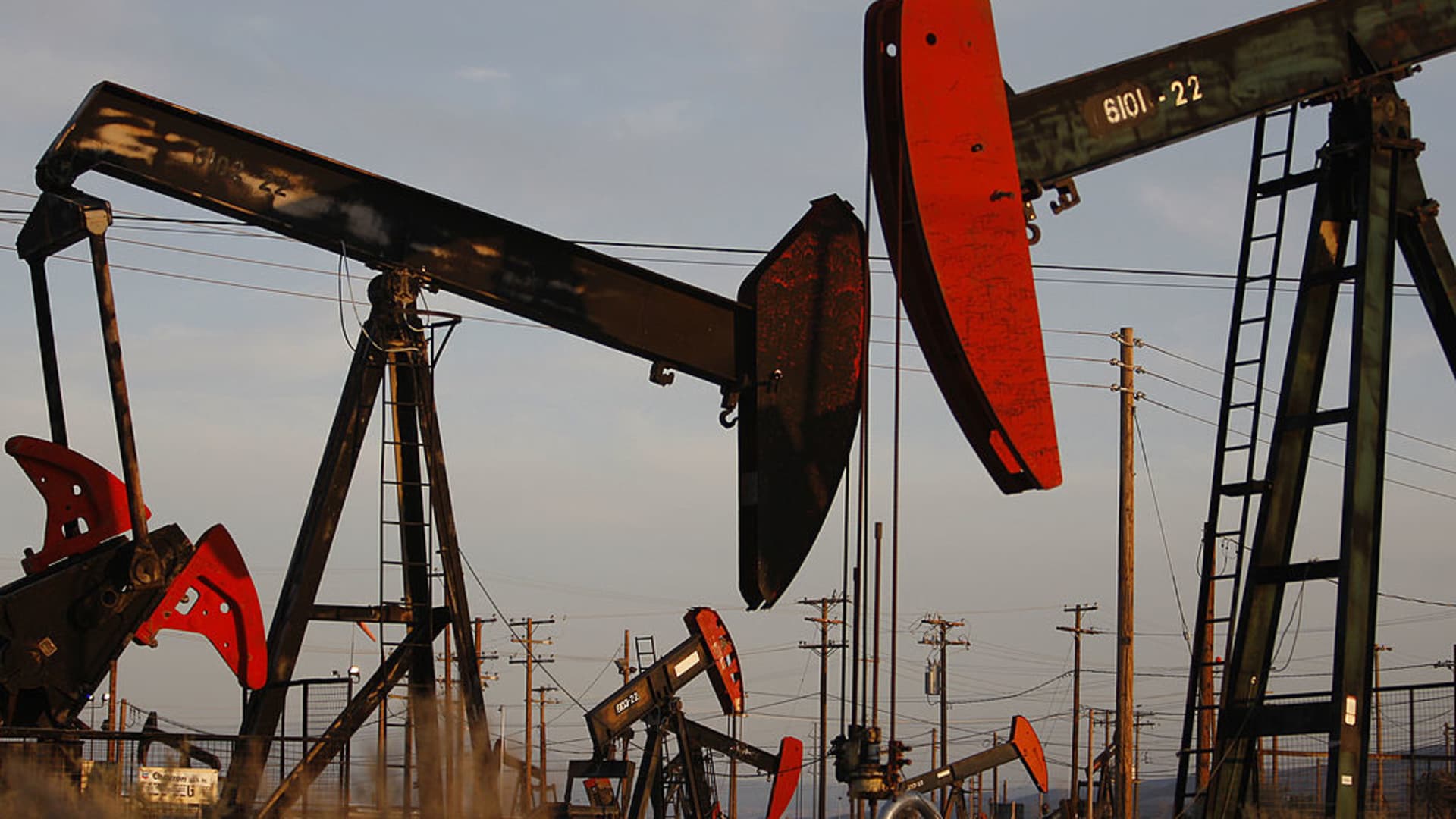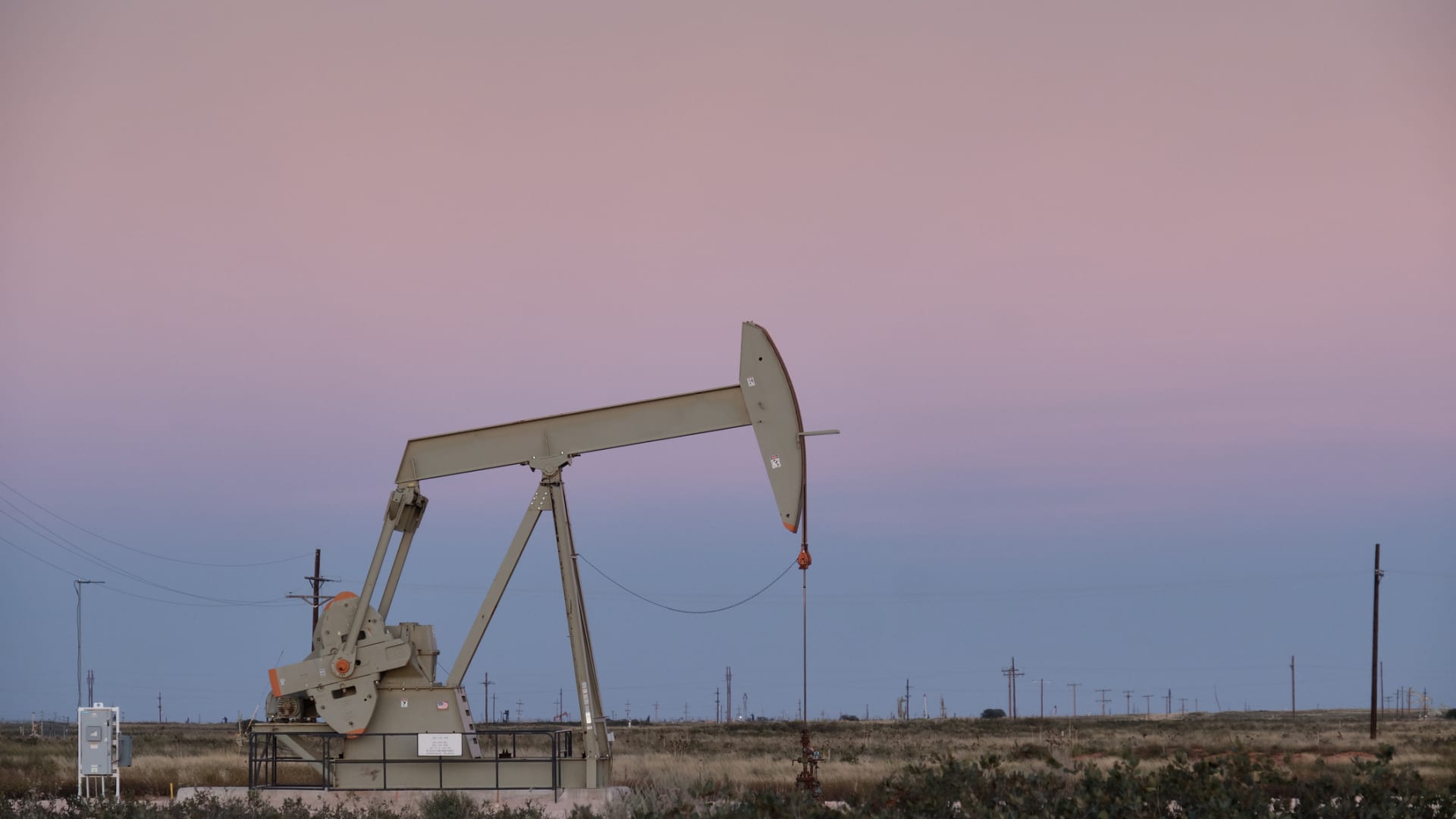Energy companies expect record profits again as strained supplies lift oil and gas prices


Energy industry earnings likely more than tripled in the second quarter, as companies hauled in record revenue due to high oil and gas prices. “This quarter is going to be a blowout,” said Stewart Glickman, energy analyst at CFRA. The two biggest U.S. energy companies, Exxon Mobil and Chevron, are reporting on Friday. Analysts say they will be watching to see how much free cash flow the industry generates, and how much of that is being spent on capital expenditures and returned to shareholders. Europe’s oil giants Shell and TotalEnergies both announced record profits Thursday and plan to buy back a combined $8 billion in stock during the third quarter. According to I/B/E/S data from Refinitiv, the S & P energy sector is expected to see profit growth of 259% for the quarter, following the first quarter’s 269.5% gain. “They have, I would say, a couple of tailwinds at their back,” said Glickman. “The first for sure is energy prices. But it’s both oil and natural gas. Crude oil, U.S. WTI, was averaging close to $110 in the quarter. That’s up 65% year-over-year. … Natural gas … that was about $7.50 per million BTU. It was under $3 a year ago.” West Texas Intermediate oil futures slumped under $100 per barrel this month on recession worries and had been trading in the $90s per barrel. Natural gas futures , trading on the CME, were close to their year high, above $9 per mmBTU. “A lot of these stocks are capital return stories as opposed to capex stories, as they had been in the prior 40 years,” said Julian Emanuel, head of equities, derivatives and quantitative research at Evercore ISI. Shareholders have pressured companies to be more constrained in their spending, even during an oil price boom. As a result, companies have improved their balance sheets and returned more cash to investors. “I think it’s less about whether they beat or miss their number and more about how disciplined are they planning to remain,” said Glickman. “One of the things the industry has really been getting the message on quite vigorously is the importance of not overdoing it, not stepping on the gas pedal on capex. If they do it, and everybody does it, we’ll get a supply-led collapse.” Glickman said it will be important to watch how the industry is spending its free cash this quarter. “Are you going to stick to your knitting and give us dividends and buybacks or are you going to plow some of this excess cash flow into incremental capex?” said Glickman. “We’re going to see capex numbers that are bigger increases only because cost increases picked up. You might get companies talking about 25% increases in capex but really what that means is 20% cost inflation and 5% drill big activity.” Energy stocks lost ground in June as the price of oil fell. The Energy Select Sector SPDR Fund , which represents the S & P energy sector, peaked in June and was well off its $93.31 per share high this week. The ETF was trading at about $75 Thursday. It was up more than 5% on the week so far, and was still up 35% year-to-date, while the S & P 500 was down about 15% year-to-date. This week, ahead of earnings, energy stocks have been trading higher with the price of oil. “If you look in the great sweep of reporting history, those stocks on balance have tended to respond a lot less to their individual earnings reports. That may not necessarily be the case this time,” said Emanuel. “If there are certain companies that hit on the themes of FX [foreign exchange] headwinds or labor input costs, those companies are likely to be penalized. It really is about as stock specific an environment as I’ve ever seen,” he added. Dan Pickering, founder and CIO at Pickering Energy Partners, said after the June pullback, energy shares have become quite attractive. “They’re not immune to recession fears,” he said, adding he sees the sector as a good buy now. “We’re probably not going to have a meaningful enough downturn to dent the cash generation story for the energy companies.” Natural gas has been rising this week as Russia reduced supplies to Europe. Europe has vowed to end its reliance on Russian oil by the end of the year, and Emanuel said the outlook for crude prices is uncertain because of the Ukraine war. The U.S. government has tried to cushion the impact of higher prices on consumers. On Tuesday, the Biden administration announced the sale of another 20 million barrels of oil from the Strategic Petroleum Reserve. That is on top of an announcement in March that it would releases 1 million barrels a day for six months. Big oil, big bucks Big oil, in particular, has been criticized by the White House for making record profits while gasoline prices rose to record levels this spring and summer. Exxon’s profits are expected to soar again this quarter, rising to $3.74 per share, nearly 240% above last year’s second quarter, according to Refinitiv. Chevron earnings are expected to be up nearly 200% at $5.10 per share, according to Refinitiv. President Joe Biden slammed Exxon after its first-quarter earnings report, saying it made “more money than God.” The administration has pushed for more oil production. While U.S. oil production has risen to more than 11.9 million barrels a day, it is still about 1 million barrels a day below the pre-pandemic peak. After hitting an all-time high of $5.01 per gallon on June 14, gasoline prices have been falling with the price of oil and were at about $4.30 per gallon this week, according to AAA. Glickman said a major factor for gasoline prices is a lack of refining capacity, which is about 1 million barrels a day below pre-pandemic levels. “I’m a little sympathetic to the industry. They’ve been told for around five years … you guys should be getting ready for the energy transition,” he said. “If you’re a manager, a CEO of an integrated oil and gas company or an independent refinery, would you spend a ton of money — billions of dollars — to pay for a sudden, abrupt need for more product? Even if you could do it, you can’t bring on a refinery that quickly.” Refining margins have improved dramatically. For instance, Marathon Petroleum, which operates refineries, is expected to see a 48% jump in revenue, and a more than 1,100% increase in profits, to $8.04 per share for the quarter, according to Refinitiv. Pickering said across the board, the industry is poised to make record revenue and profits, and healthy cash flows that are near or at record levels. He noted that Exxon and Chevron are not expected to raise their dividends this quarter, as they typically do it in the back half of the year. But other companies with variable dividends should see higher payouts. “The question is who is going to raise their percent of cash committed to shareholders?” said Pickering. For example, Diamondback raised the percentage of cash flow it returned to shareholders to 75% from 50%, he said. Devon Energy is a company with a variable dividend. Its earnings for the quarter are expected to be up nearly 300% to $2.39 per share, when it reports Monday. Revenue is expected to nearly double to $4.72 billion. EOG Resources reports on Aug. 5, and it is expected to post a 55% increase in earnings, to $2.67 per share. The oil and gas exploration and production company returns at least 60% of its free cash flow to shareholders. After its first-quarter earnings, it declared its regular quarterly dividend of 75 cents per share, plus a special dividend of $1.80 per share. Emanuel, who is neutral on the sector, said despite earnings, the sector will ultimately trade with oil and gas prices. “Energy stocks tend to be more about where the commodity prices is headed when you look near- to medium-term,” said Emanuel. “The question is whether free cash flow is being impinged by the same stresses that staples stocks and technology stocks are feeling — FX translation and labor management.” This post has been syndicated from a third-party source. View the original article here.




